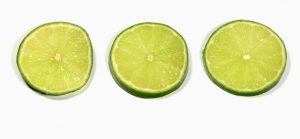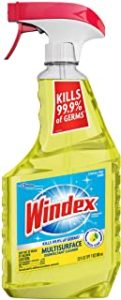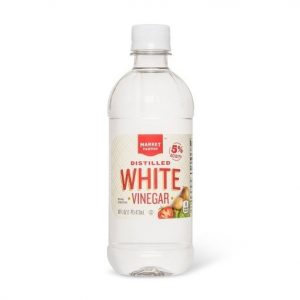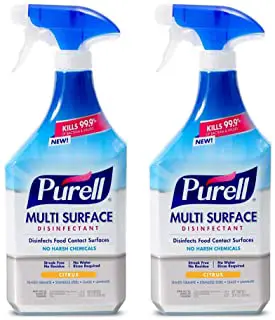One of the many lifestyle changes that the COVID-19 pandemic brought into our lives and homes, is the need for increased hygiene, whether body or physical environment hygiene.
We all found ourselves increasing the need for hygiene either through regular handwashing or sanitizing, coupled with regular cleaning of our homes and other environments such as our offices, cars etc.
The kitchen is one of the main rooms in our homes that benefitted from the increased hygiene awareness. This includes not just more regular cleaning of utensils, appliances and surfaces like floors or countertops, but more thorough cleaning
The thorough cleaning for most homes now includes use of a disinfectant to ensure that the surfaces and appliances are not only clean, but also sanitized to get rid of disease-causing germs.
In as much as the world is learning to live with COVID-19, we must still not lower our guard or those almost paranoid hygiene levels we had adopted. It is still an appropriate time to look into different types of disinfectants, natural and commercial and steps to follow in disinfecting your kitchen.
No products found.
Types of disinfectants
Kitchen disinfectants
For convenience and ease, most homeowners like purchasing cleaners from the local store, and these cleaners are usually the best at what they do. You should adhere to the guidelines on the labels when you use these cleaners.
Additionally, ensure you use the right cleaners for various surfaces. Think about buying top rated no-rinse kitchen cleaner disinfectants you can use in your kitchen. Here’s a list of popular disinfectants:
Floor cleaners:
Remember to clean your kitchen floor. You can use warm water to dilute the best floor disinfectant or bleach. This will help create floor cleaning solutions that can cut through all the dirt and dust, greasy stains, and residue of food items build up from foot traffic.
Surface wipes:
These disinfectant wipes usually have a similar type of ingredients as the sprays. However, because of their disposable and convenient nature, wipes are popularly used to clean small spills and maintenance of countertops instead of full cleaning up.
Disinfectant sprays:
Sprays in the form of liquid are quite handy when it comes to kitchen clean up. A kitchen disinfectant spray is usually multipurpose. This means you can use it on a range of surfaces, from cooker tops to cabinet handles. Just spray, give it time to soak, and then use a clean cloth to wipe.
Bleach:
No products found.
This is an amazing disinfectant and one you can use in different kitchen areas. You can use it to disinfect the kitchen sink, countertops, or the floor. Bleach is very effective at eliminating germs, such as the ones present in raw meats.
But when you use this cleaner, you should ensure you adhere to the instructions on the product’s label. Additionally, you should work in an airy room, since bleach is a strong substance.
How to clean utensils with vinegar
- Using vinegar to wash dishes will make them very clean with a shiny finish. To use your hands, you can add some teaspoons of vinegar in the soapy water. Your dishes will emerge clean from any coating, which may get left behind from low quality liquid dish soap.
- For serious discoloration, place a light layer of salt in the bottom of stainless-steel, glass, or plastic dish and pour vinegar over the salt. Allow it to sit for fifteen minutes before you scrub it away.
- If you have cloudy glasses, then get rid of the coating with vinegar. You should dip cloudy cookware or glass in a bath of three parts water and one part vinegar to get rid of the nasty coating.
No products found.
Types of kitchen sanitizing agents
There are various sanitizing agents used in the kitchen. These are often used based on the kind of staining found on them, the clean up and the item to clean up. There are four major kinds of cleaners used in commercial kitchens:
- Acids
- Abrasives
- Degreasers
- Detergents
Acids
These cleaners are the strongest when it comes to cleaning, and you should use them carefully. If you don’t dilute acid cleaner properly, it might be very corrosive and toxic.
Mineral deposits are best eliminated by acid cleaners. They can also get rid of rust from toilets or descale dishwashers.
Abrasives
These are chemicals or substances that depend on scrubbing or rubbing action to clean up the dirt from hard surfaces. Abrasives are regularly used in commercial kitchens for cleaning cookware and floors.
You should use care when handling abrasives since they might scratch specific kinds of materials used for kitchen equipment like stainless steel or plastic.
Degreasers
No products found.
These are sometimes called solvent cleaners, and you can use them for getting rid of grease from surfaces like grill backsplashes, counters, and oven tops.
Back then, methylated spirit was popularly used as degreasers. Currently, many food businesses try to use degreases that don’t emit toxic fumes to prevent chemical pollution.
Detergents
These are the most popular kind of cleaners. You can use them in your house or commercial kitchens. The detergents work by breaking up soil or dirt, which makes it simple to wash it away.
A commercial kitchen sanitizer is often a synthetic product created from petroleum products. It might be in the form of crystals, liquid, powder, or gel.
Always follow clean up with disinfecting
Clean up is just the first step to a kitchen that’s free from germs. You use detergents to clean; however, it does not eliminate bacteria or other microbes that can cause food poisoning. To eliminate bacteria and make sure you have a clean workplace, you should follow clean up with sanitization.
- Additionally, cleanup and sanitization help to:
- Prevent allergies caused by cross-contamination
- Stop cross-contamination
- Keeping away pests from your business
Best Natural Disinfectant for the Kitchen
These types of disinfectants made in the house can be effective at cleaning up the kitchen. First, make sure you test them on a tiny area to check there’s no adverse reaction. If you want to try out the natural option, here are a few cleaners that will do the job:
Lemons:

The acidity of lemons means they are superb kitchen cleaning agents and good at eliminating germs. For sinks, cooker tops, and work surfaces, cut a lemon in half and sprinkle using bicarbonate of soda. You can use this as a scrubber to drive out ground-in dust.
Vinegar:
This is popular for being an amazing all-round cleaning agent, especially for the kitchen area. The reason being, its high levels of acidity mean that many germs just can’t survive when they come into contact.
You can use distilled or white vinegar directly from the bottle for a great wipe down based on the surface material. Also, you can use a bit of warm water to dilute the vinegar.
Do not worry, as once the vinegar drys, the odor will fade away. However, if it proves too much, just add some drops of natural oils, like orange, lemon, or lavender, into the mix in advance.
How to sterilize quartz countertops

Most people prefer quartz for its affordability, elegance, and durability. It also comes with a majestic look, it is low maintenance, safe from bacteria, mold, and stains, and you can get it in lots of colors.
Cooking will be a messy procedure, and splatters and spills are a popular happening. This means the quartz will fast turn into a bacterial breeding ground for flu, Salmonella, E. coli, cold and more.
Other likely contaminated items that people often set on their kitchen countertops include mail, backpacks, purses, grocery bags, lunch boxes, or other house items.
You should clean quartz countertops every day and sanitize them at least twice weekly. Also, do instant spot sanitizing after any use of dairy products, eggs, or raw meat.
Whether very alkaline or acidic, products like concentrated bleach, glass cleaners, nail polish remover, and oven cleaners can disintegrate the bond between the quartz and resin and potentially damage the surface.
Keep away from working with scouring pads or abrasive sponges. The reason being, they will dull your quartz counters’ polished surface.
For all its benefits, there are some hazards to look out for if you own this type of countertop. You should not use abrasive or acidic cleaning products on it; use water and simple soap instead.
The material is only recommended for use indoors since it is durable but not unbreakable. Remember to use hot pads, trivets, and cutting boards to protect the quartz kitchen countertops so it will last for years.
What you will require:
- Clean towel or rag
- Isopropyl alcohol
- Sponge
- Water
- Spray bottle
- Dish soap
No products found.
Steps to follow in disinfecting your kitchen
-
Cleaning it off
You should always ensure that you remove everything from the kitchen countertops before cleaning up, which includes any décor and small appliances. This additional step will help to make sure everything is clean.
-
Get rid of debris
Make sure you use a dry sponge for scooping all the crumbs. You can easily use a dustpan or scoop it into your kitchen sink. Removing all the dry grime off the countertop will ensure you do not scratch the quartz’s surface while cleaning up.
-
Scrubbing the surface
Take a wet, non-abrasive dish sponge and apply some drops of dish soap. With your sponge, use an “S” pattern to wipe the counter. You might want to scrub a little harder on those caked or sticky areas. For very stubborn spots, remove it with a razor blade. Just ensure that the blade’s entire edge rests on the kitchen countertop.
-
Rinse the lather
Once you’ve scrubbed your kitchen counter, rinse all the lather away. Soap will lift grime while it’s washed away by water. You should thoroughly rinse out the sponge and use it for wiping all the lather. You might have to re-rinse your sponge a couple of times. Once you’re done, you should wipe away any excess moisture.
-
Disinfecting the surface
You can use two cups of water and 1/4 cup rubbing alcohol in a spray bottle to make a simple disinfectant. Additionally, you might want to add one to two drops of essential oils to add a pleasant scent to the mixture. Spray your kitchen countertops, ensuring that you cover the whole surface. Let the cleaner sit for two to three minutes.
-
Drying the surface
After some minutes, the cleaner will disinfect the kitchen countertops. You can wipe away any remaining moisture using a dry, clean dishtowel. Now, the kitchen countertops are good as new, disinfected, and clean.
Cleaning up quartz counters is the same as cleaning up other counter materials like concrete and granite. You can also consider making your own DIY kitchen counter disinfectant.
How to sanitize dishes with vinegar

You can use vinegar on all your dishware, countertops, appliances, sink, and floors.
To use vinegar to sanitize the dishes:
- Get rid of large pieces of food and grease from the dishes.
- Load your dishwasher or use water and soap to wash them.
- Mix a solution of 50 percent water and 50 percent vinegar.
- Place the solution into a spray container and spray your dish.
If there’s a powerful vinegar odor, use warm water to rinse your dishes to get rid of it. After rinsing your dishes, allow them to air-dry.
How to sanitize your kitchen
Your kitchen is most likely the one room in the house that needs the most attention when it comes to ensuring that hazardous bacteria are kept away. To prevent microorganisms from spreading and safeguard your family’s health, you need to know how to sanitize the kitchen effectively.
Tasks may use up lots of your precious time, even if you stick to straightforward steps when you clean up the kitchen and do it as efficiently as you can.
Kitchen sanitization involves two processes:
- Sanitizing stovetops, cabinets, countertops, and other surfaces and
- Sanitizing cooking utensils, dishware, appliances, and other objects.
No products found.
Sanitizing countertops, stove tops and other surfaces
Before you clean up the kitchen, you should remove everything from the surfaces. By doing this, you can clean up your kitchen entirely.
When selecting your sanitizer, stay away from abrasive cleaning products with bleach or other harsh cleaners.
As you clean up the surfaces, spray all the things in your kitchen first and wipe it down after some minutes. This will offer the chemicals in the sanitizer more time to eliminate microorganisms on the surface.
To prevent the kitchen from turning into a breeding ground for germs and bacteria, you need to know how to sanitize it well. Make sure you keep the kitchen healthy and clean up with these sanitizing methods in the kitchen:
- Wipe the kitchen counters and stovetop with a paper towel with some dish detergent and water. Use clean water on a new paper towel to rinse the surfaces and leave to dry.
- Ensure that you wash the cutting board and any other utensils, which come into contact with raw meat. First, use some hot water and soap and then once more with the bleach mixture.
- Additionally, you can mix a tablespoon of bleach and water (3 liters) and use the solution to spray your kitchen surfaces and kill most germs. Let the surfaces air dry.
- Try to wipe all spills right away as they occur, whether on the counter or in the refrigerator.
- Additionally, you can disinfect the floors with the bleach mixture.
- Remember to wash your hands after finishing.
Sanitizing and cleaning kitchen tools and equipment
How do you go about sanitizing your kitchen tools and equipment so that you can guard against the COVID-19 pandemic and other germs?
Essential Kitchen Cleaning Materials
As well as sanitizing, you will also want to ensure you have other essential clean up materials before you begin your kitchen cleaning task. You can get these items from the local store.
Bucket and mop:
No products found.
You should use these for disinfecting your kitchen floor. Get a mop that features a detachable head for easy clean up. Mops are available in both string and sponge varieties.
Sponges work best on tiled floors since they enter the grooves of the grout; however, string mops work perfectly to deal with corners.
Spray bottle:
If you have chosen to try making a natural sanitizer from vinegar, it is good to put it in a spray bottle. This means it’s easy to make a big batch all at once and keep it in the kitchen cabinet until the next use.
Broom:
Before you disinfect a floor, you should use a brush and dustpan, or a broom, to sweep up any loose dirt and dust.
Microfiber cloths:
If you are not using surface wipes, the best quality, washable cloth is important to clean up cooker tops and worktops. Do not try using paper towels or other cloths that will disintegrate.
Rubber gloves:
If you are using a sanitizer- particularly bleach-you should protect your skin from the chemicals. Select either disposable or reusable and wear them always during the process of cleaning up your kitchen.
Simplest way of sanitizing a kitchen sponge in the microwave
Putting a sponge in a microwave will eliminate 99.99999% of bacteria present when you do it correctly. If you do not have a microwave oven, boiling the sponge in water will work as well. Both of these techniques will kill germs instantly.
- Rinse the sponge thoroughly, and then place the damp sponge in the oven form one to two minutes on High.
- Let the sponge stay in the oven until it is cool enough for you to handle it. After that, squeeze any remaining water out and allow it to air-dry.
A Purell disinfectant spray needs no rinsing after your handle or spray. It is safe for food contact surfaces, and safe for use using bare hands. This disinfectant spray doesn’t have any preventive measures, has no bleach, and has no shelf life and no harsh fumes.
Since Purell disinfectant has alcohol, it is good for cleaning up house items. You should try it on countertops, faucets, sinks, and other surfaces. It will wipe away grime; however, it evaporates fast.
Sanitizers used in food industry
In the food industry, chemicals are regularly used for disinfecting and sanitizing product contact surfaces. Such chemicals offer a necessary step to make sure the food items made and eaten are as free as possible from microbes that may cause foodborne ailments.
There are three main chemical compounds used in the food industry as sanitizers. These include iodine sanitizers, quaternary ammonium, and chlorine-based cleaners. Chlorine is the most popularly used sanitizer product, as it’s quite affordable and very effective.

